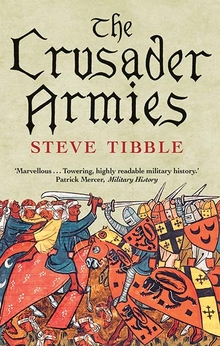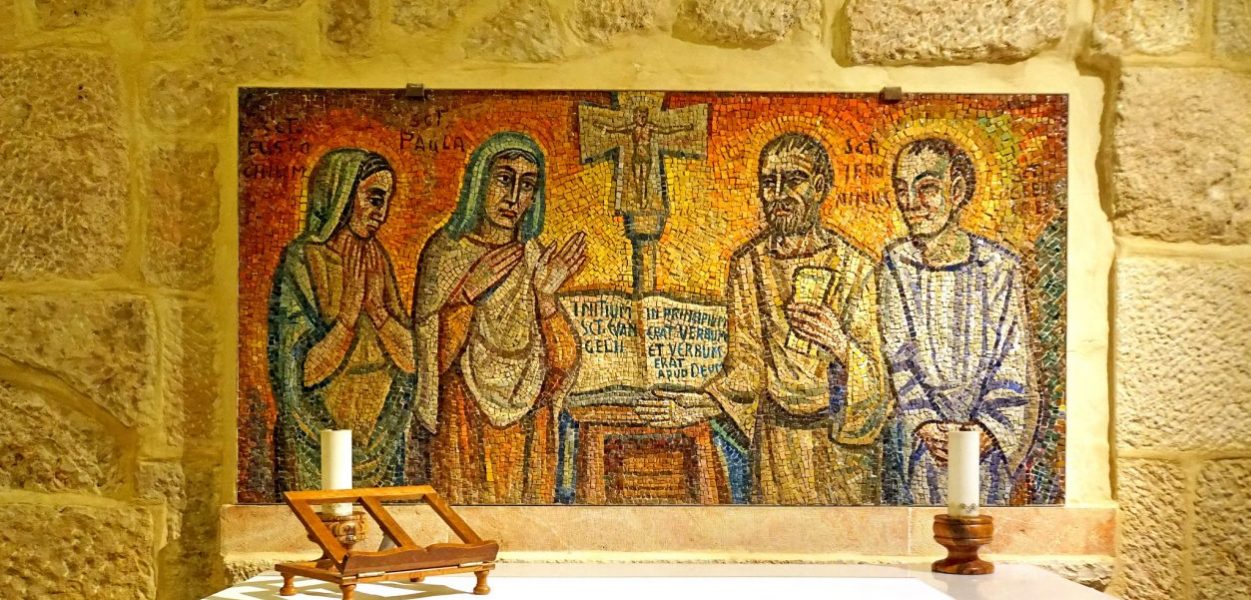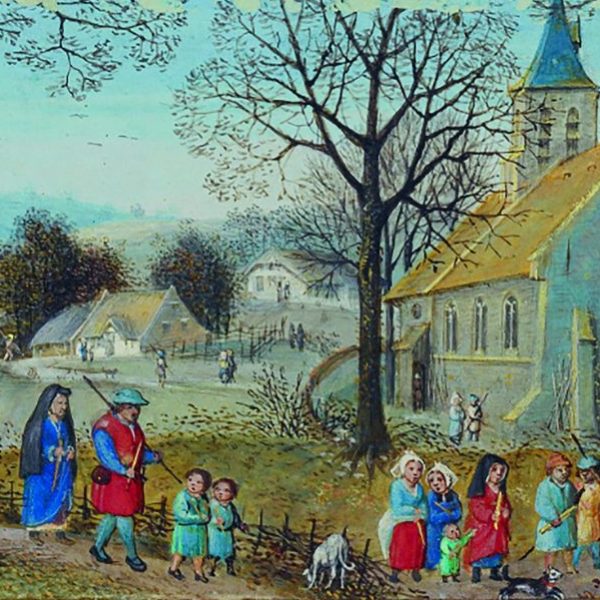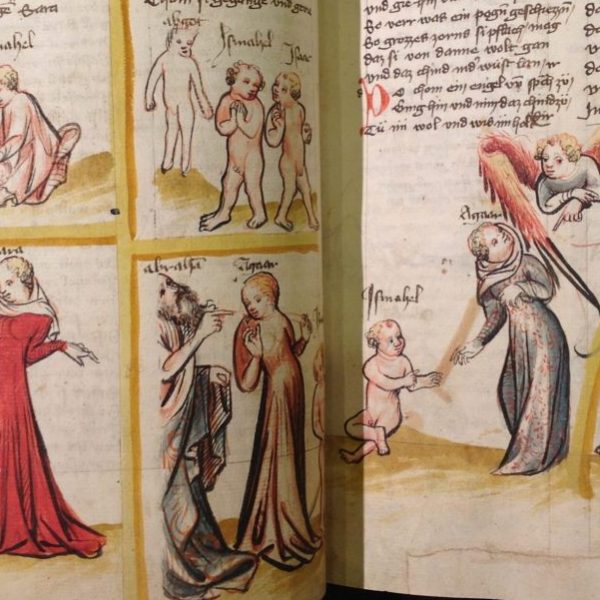Christian Ecumenism in the Crusades
Steve Tibble—
The main Christian groups in the crusader states were the Greek Orthodox, the Syrian Orthodox, the Armenians, the Maronites and, particularly once colonial rural settlement began to gather pace in the second quarter of the twelfth century, the Frankish Catholics. Religious bigotry was far less prevalent than one might suppose, particularly when compared to twelfth-century Europe or the Byzantine empire. This tolerance was based on avoiding issues rather than confronting them. There was no major attempt to reconcile or clarify religious differences between the various Christian sects. Instead, everyone focused on the far more practical approach of just trying to rub along together. Where rapprochement between the different churches did take place, as, for instance, with the Maronite community, the coming together was gradual, based firmly on mutual respect and the wishes of local communities.
Extraordinary instances of cooperation can be found throughout the crusader states. The Frankish religious leader of the Principality of Antioch, their patriarch, invited the Syrian Orthodox leader, Michael the Syrian, to come with him to debate the Cathar issue at the third Lateran Council in 1179. Neither party was unduly disturbed by Michael’s claim that he himself was the legitimate patriarch of Antioch, or that the Syrian Orthodox were considered by some in the west to be just as heretical as the Cathars they were discussing. Baldwin, the Frankish count of Marash, had an Armenian priest as his personal confessor. And we know of many instances of surprisingly close cooperation between different denominations such as where, for example, a Greek Orthodox priest even wished to be buried as a Hospitaller.
Religious practices could be surprisingly permeable. In many instances, and certainly on a localised basis, cooperation between different denominations was the norm. As the twelfth century progressed, this cooperation became more ingrained, helped partly by increased familiarity and intermarriage between the communities, and partly by the sense of common purpose that being beleaguered and surrounded brought with it.
The Syrian Orthodox patriarch of Antioch, who had been supplanted in the local church hierarchy by his Frankish equivalent, and who had every reason to feel bitter towards the new Catholic arrivals, was magnanimous in the way he described their tolerance. The Franks, he said, ‘never sought a single formula for all the Christian people and languages, but they considered as Christian anyone who worshipped the cross without investigation or examination’.
This was a policy based on practical considerations of self-interest. In 1120, for example, the Latin Kingdom of Jerusalem found itself under acute threat. There had been several years of enemy attacks. Drought had caused severe crop failures. The army of Antioch had been almost wiped out just a few months earlier, and the entire principality had barely been brought back from the edge of extinction. Morale was at an all-time low and, as was common with very religious societies, people looked within to find the fault. As William of Tyre put it, since ‘it was evident to all that the sins of the people had provoked God to wrath, it was decided by common consent that they must amend their wrongdoing and restrain their excesses’.
The decision was made to hold a council at Nablus, a general assembly which included all the leading secular lords, as well as the most senior clerics, in order to establish a clear religious and moral code in law. As this was the early days of the kingdom, almost everyone present would have been born in Europe. The small Frankish ‘Catholic’ community was surrounded by Christians who would have been termed ‘heretics’ in Europe. If this assembly had been held in the west, confronted with such clear proof of God’s displeasure, item one on the agenda would almost certainly have been how to deal with the ‘heretic problem’.
In the Latin Kingdom of Jerusalem, however, supposedly an epicentre of medieval religious zealotry, there was no such discussion. A new moral and legal code of conduct was compiled, with twenty-five articles. There was some discussion of relations with local Muslims but, strikingly, no mention whatsoever of any legal restraints that needed to be made with regards to local Christians, whatever their denomination.
This was partly based on an understanding of the new relationships that were being forged. Very few women had come out on crusade, entirely understandably, so intermarriage with other communities began early on. But, even more fundamentally, tolerance was based on need. The crusader states were heavily outnumbered, and would always be so. You could afford to take a hard line on heresy if you lived in western Europe. If you lived in Palestine or Syria, you needed all the help you could get.
Intermarriage was based on necessity and a shared religious culture, and was carried out at all levels of society from the very earliest days of the crusader states. The royal families of the Latin East were inextricably linked to the local Christians. Baldwin I, king of Jerusalem, and previously count of Edessa, was married to Morphia (queen of Jerusalem, 1116–26/8), an Armenian, daughter of the lord of Melitene. Their children founded the leading dynasties of the crusader states, based from the earliest days on the partnership between the Catholic west and the Christian churches of the east. After a few years, most of the ‘Frankish crusader’ families were of mixed race, with Palestinian, Syrian or Armenian blood, and that process started at the very top.
Intermarriage brought the different Christian communities ever closer together. As with so many aspects of life, our sources focus on the upper classes rather than the rank and file, but it is clear that the example of the royal family was followed by their vassals and leading tenants. One of Baldwin II’s cousins, for instance, Galeran of Le Puiset, married the daughter of the Armenian lord of al-Bira, while another cousin, Joscelin, married the Armenian daughter of Lord Constantine, son of Rupen.
The celebrity marriages of the ruling class feature most heavily in the chronicles, but the integration of ordinary people into local Christian communities was probably even more widespread and also received recognition, albeit in a more general sense. As Fulcher of Chartres put it:
[we,] who were westerners have now become easterners . . . We have already forgotten the places of our birth; already these are unknown to many of us or not mentioned any more . . . Some have taken wives not only of their own people but Syrians [i.e. local Christians] or Armenians or even Saracens who have obtained the grace of baptism . . . People use the eloquence and idioms of diverse languages in conversing back and forth. Words of different languages have become common property known to each nationality and mutual faith unites those who are ignorant of their descent . . . He who was born a stranger is now as one born here; he who was born an alien has become as a native.
The idea that ‘mutual faith unites’ was a powerful one, and an essential precondition for the survival of the crusader states. Tolerance in the face of religious differences that would have torn many other Christian societies apart was based on necessity. The Frankish armies needed as many recruits as possible. Interrogating doctrinal issues too closely was in no one’s interests, particularly in a community where many had parents from different denominations and different heritages. It is easier to get along if you choose not to confront issues that are incapable of easy resolution: as the American military used to say: ‘don’t ask, don’t tell’.
From The Crusader Armies by Steve Tibble. Published by Yale University Press in 2020. Reproduced with permission.
Steve Tibble is honorary research associate at Royal Holloway, University of London, and the author of Monarchy and Lordships in the Latin Kingdom of Jerusalem, 1099–1291.
Further Reading:



























